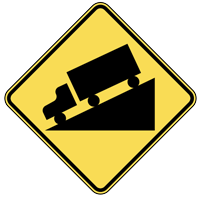There are campers who like RV camping better to experience nature with the amenities of home.
According to a recent survey, 92% of individuals owning an RV affirmed that RV’s are the only and best means to travel and go camping with the family, especially when with children.
Do rent a Recreational Vehicle for your short camping trip; it is the best means to survey your actual requirements before purchasing.
Here are safety guidelines for that memorable RV camping trip:
1. Take up a professional course in driving focused on the specialized requirements of efficiently and safety of operating your RV.
2. Practice your skills on roads with minimal traffic.
3. In the U.S., when you are already 62 years or over, you need to acquire a “Golden Age passport”; it will be your ticket for free wildlife, national monuments, parks, national recreation facilities and refuges access.
4. In tourist areas and peak seasons, make reservations at least 3 weeks ahead.
5. Checklist:
• First aid kit
• Packed meals
• Canned foods
• Ample supply of Purified drinking water
• Toiletries (soap, shampoo, tissue)
• Cooking essentials
• Flashlights
• Mosquito and bug repellant lotion or spray
• Enough clothing
• Fire extinguisher
• Map, compass
• Books, game boards, cards, puzzles
6. Park your RV under a shade.
7. Build your campfire away from the vehicle.
To build your campfire, begin in an area where nothing else will potentially catch fire that you do not want to burn. Build a fire ring with rocks to contain your fire so the grass will not catch and spread.
7. Build your campfire away from the vehicle.
To build your campfire, begin in an area where nothing else will potentially catch fire that you do not want to burn. Build a fire ring with rocks to contain your fire so the grass will not catch and spread.
Start with easy burning tinder like dry needles of pine, wood shavings, paper or tiny twigs.
Put your broken dry twigs carefully placed atop the tinder, which is where your will start.
Then place some sticks in a teepee style over the small twigs and tinder, making sure there is less space in between the sticks, tinder and teepee.
Once your fire rises up, add more twigs, then logs.
8. Safety on campfires. Make sure you attend to your campfire always and extinguish it before you go inside your RV to sleep by splashing water on it.
9. Before leaving the campsite, walk around completely your RV to examine that all electric wires, sewer and water are unhooked and check if the Television antenna is put down.
Likewise, clean around the campsite making sure you leave it as it was before you came. Bring your trash with you.
Put your broken dry twigs carefully placed atop the tinder, which is where your will start.
Then place some sticks in a teepee style over the small twigs and tinder, making sure there is less space in between the sticks, tinder and teepee.
Once your fire rises up, add more twigs, then logs.
8. Safety on campfires. Make sure you attend to your campfire always and extinguish it before you go inside your RV to sleep by splashing water on it.
9. Before leaving the campsite, walk around completely your RV to examine that all electric wires, sewer and water are unhooked and check if the Television antenna is put down.
Likewise, clean around the campsite making sure you leave it as it was before you came. Bring your trash with you.
Enjoy the campfire, Respect & enjoy nature and enjoy the trip; DO NOT LITTER! This really is an excellent family treat!
 |
| Click here for more Information |
In an attempt to make mountain driving a little safer for truckers
and RV'ers, R&R Publishing Inc. has been collecting and publishing
information about mountain passes and steep grades since 1993. The Mountain Directory E-books give the locations
and descriptions of over 700 mountain passes and steep grades in
22 states. The Mountain Directory ebooks tell you where the
steep grades are, how long they are, how steep (%) they are, whether
the road is two lane, three lane, or four lane, if there are escape
ramps, switchbacks, sharp curves, speed limits, etc. With this
information, one can know ahead of time what a pass is like and
make an informed decision about whether to go over or around. If
you decide to go over, perhaps the cool morning hours would ease
the strain on the engine and transmission during the climb. Unhooking
the towed vehicle would make the climb and the descent easier.
Knowing
what lies ahead is half the battle.
Please comment and share this post!!
OLOE




